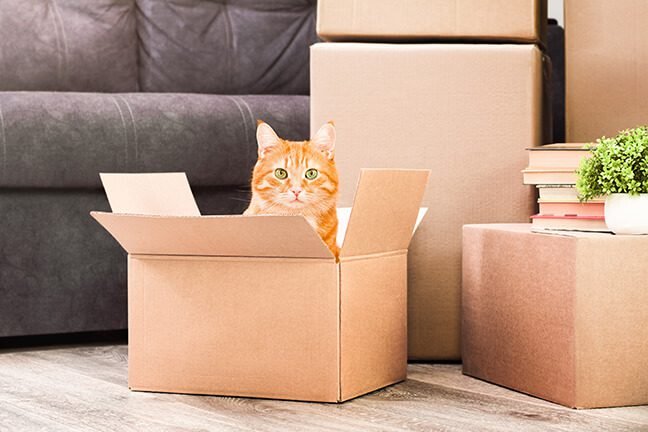Nowadays, more and more people choose to bring their pets with them when relocating to a different city or even country. Immigrants to the USA are no exception, as the country has long had the reputation of being one of the most pet-friendly places in the world. Yet though the import procedures for pets in the U.S. are considered relatively simple compared to other countries, pet owners still need to take many steps when bringing a cat into the US.
Having previously shared a guide to bringing a dog into the U.S., we focus our attention on cats this time.
The following guide provides some necessary details you need to follow when importing your cats into the U.S. Keep in mind that this list should only be your first step, as there may be additional requirements based on your originating country and your exact destination in the U.S.
For example, Hawaii and Guam have very specific animal-importing rules that may be different from other states. Always check with respective local authorities about the latest export and departure requirements.
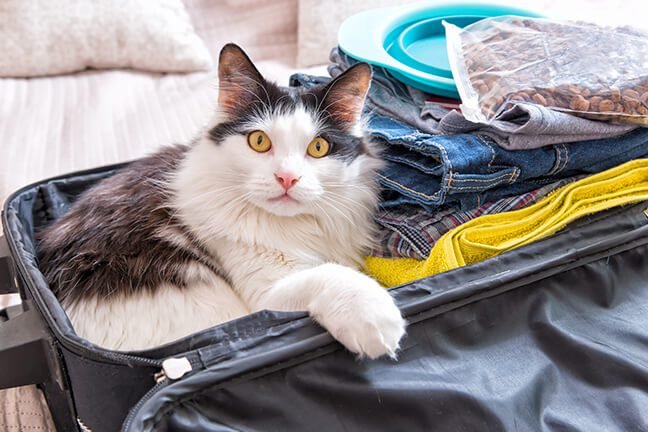
Preparation – Plan Ahead
The immigration process for cats can be as long as that for humans. Start the preparation at least 2 to 3 months ahead of the travel day and allow yourself ample time for researching, planning, and preparing.
At the time of writing, many countries and airlines have relaxed their animal transportation services as concerns over COVID-19 ease, though a good number of them are still implementing restrictions on pet traveling and importing. Stay updated with all the new rules and measures to avoid last-minute hiccups and surprises.
CDC & USDA Rules, Laws & Regulations
For importing cats in the U.S., the CDC (Centers of Disease Control of the U.S.) and USDA (U.S. Department of Agriculture) are the sites you can refer to for the latest news and requirements.
What is Required of your Cats
Compared with dogs, the import requirements and procedure for a cat coming to the U.S. is a lot simpler.
NO DOCUMENTATION is required for a domestic cat to enter the U.S. However, all cats are subject to disease control inspection at ports of entry. They may be denied entry into the U.S. or be sent to quarantine if they are found to be carrying infectious diseases that can be transmitted to humans.
Although there is no entry documentation required by the U.S., the followings are commonly required by some exporting countries and airlines that you may need to prepare:
Health Certificate
Not a requirement to enter the U.S. but most airlines require a valid health certificate issued by a licensed veterinarian to endorse your cat is fit and healthy for flying.
Rabies Vaccines
Cats entering the United States are not required to receive a rabies vaccination. But again, most airlines and some States in the U.S. require that. Keeping your cat’s rabies vaccination up to date before traveling also reduces the risk of infection. Be sure to keep a valid rabies vaccination certificate handy when traveling.
Microchip
Not a US entry requirement but again, it may also be required by your originating country. You can consider the 15-digit ISO-compatible microchip, which is the world standard. Check with a licensed veterinarian if you want to find out more about the simple chip injection procedure.
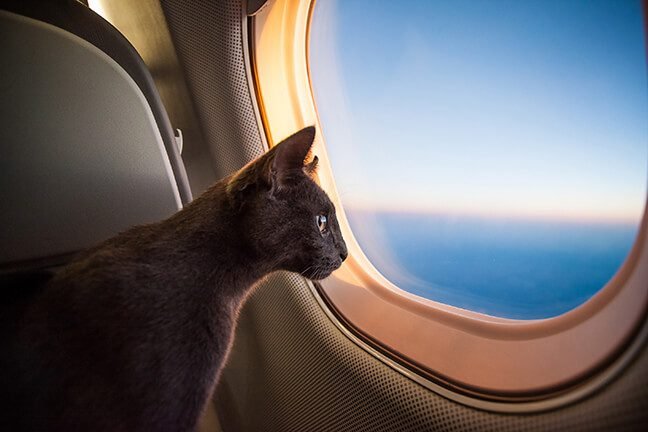
Booking A Flight
Depending on the pet travel policies of the airline you choose, your cats may be able to fly with you in the cabin as a carry-on, as a checked pet or as cargo.
No matter which travel service you use for your cat, make sure you carefully go through the pet travel policies of the airline, including the most up-to-date guidelines and restrictions. Airlines like United Airlines, American Airlines, and Delta have made their pet traveling policies available on their websites.
Consider the Weather
Most airlines implement temperature restrictions to make sure checked pets traveling on Cargo are not exposed to extreme heat or cold. Some airlines suspend pet travel to some destinations during summer (e.g. Las Vegas, Phoneix, etc.) because of heat restrictions. Choose the most suitable season and itinerary to ensure a safe and comfortable journey for both you and your cat.
Cat Carrier
A suitable carrier should be large enough for your cat to stand up and turn around. It should be approved by the International Air Transport Association (IATA). Click here for details of carrier specifications.
It is important to help your cat get comfortable with the carrier before the flight. Get the travel carrier as far in advance as possible – ideally a month before your cat gets on the plane. Your cat needs time to familiarize itself with the pet carrier which he/she will be spending long hours in during the stressful trip.
Quarantine
Fortunately, there is NO quarantine requirement for cats in most U.S. states.
However, there are specific quarantine requirements for cats entering the State of Hawaii and the Territory of Guam. Visit the website of the State of Hawaii and the Department of Agriculture of Guam for details if these happen to be your destination.
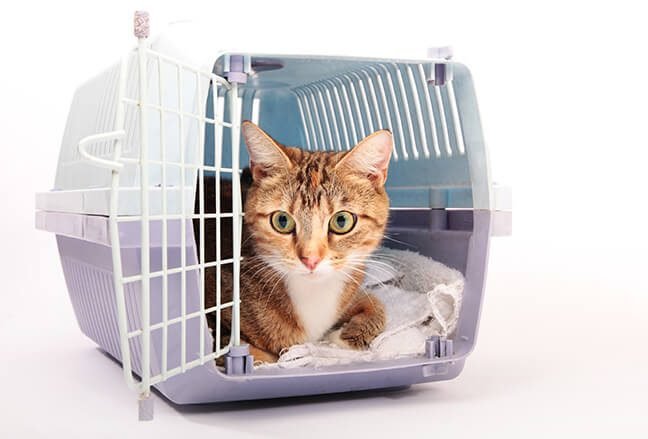
Pet Mover
You may engage a pet relocation agency if you need help bringing your cat to the U.S.. Look for a reputable and reliable pet mover. The cost is around US$1,000 to $5,000 to ship a cat as cargo to the U.S. from another country. The agency should be able to handle all documentation and logistics for you. The cost varies depending on the travel distance, country of origin, airlines, pet sizes, additional medical and vaccination services, export and import documentation and clearance, etc. You may find the list below of estimated items useful:
- Airlines
- Shipping Crate
- Vet Medical Visit and Vaccination
- Export & Import Documentation
- Transportation, Parking
- Tax
- Other Services – including coordination and liaison with related government departments, pet customs, airlines, vet, airport transportation, etc.
IPATA and PetRelocation are two renowned professional pet relocation companies that operate globally. You can benchmark their services and prices against other service providers, as well as your own budget and preferences. Request estimates from at least a few shippers for comparison.
Some agencies may provide a relatively lower quote to attract customers, before adding numerous charges at a later stage. Be sure to clarify all potential costs before committing.
Bringing a Cat into the US - Day of Travel
Arrive at the airport early to allow extra check-in time and security check.
You should bring a harness, training pads, a water dish, and cat food that your cat may need on the journey. Bear in mind that some veterinarians suggest avoiding giving food to cats during travel as they may get an upset stomach due to stress.
Calm Your Cat
While the use of tranquilizers or sedatives may seem like an easy option to keep your kitty calm while traveling, they may not be necessary. An alternative is a homeopathic medication, which may help reduce the stress associated with a new environment and new experience.
Seek advice from your veterinarian way ahead of the departure date. Some may recommend that your cat take the medication beforehand so you can observe the effect. Avoid giving new medication to your cat while traveling, as it might be difficult to get immediate medical attention while on the flight.
Keep Travel Documents Handy
Be sure to keep hard- and soft copies of all information about your cat organized and handy. This will be extremely helpful for handling inquiries from vets, airlines, pet customs, pet movers, and even pet groomers after you have landed in the U.S. Missing or incomplete documents can lead to extensive delays or even denial to board the flight.
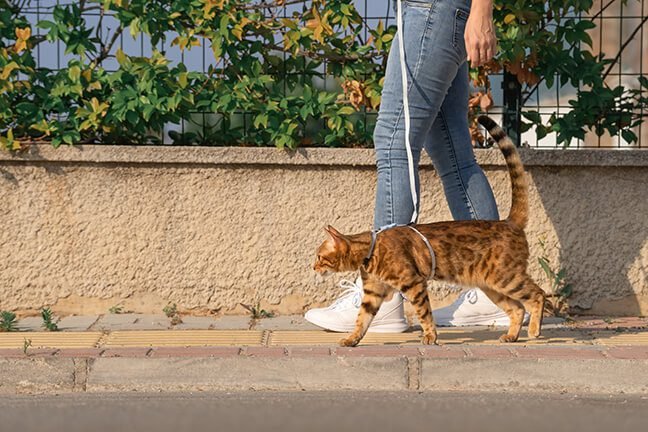
After Arriving in the U.S. with Your Cat
Find a reliable vet near your new home and arrange the first appointment for your cats as soon as you settle down. This is to prepare for any medical needs after your cat’s travel, and for any emergency needs in the future.
You may also consider using a vet care app like Fuzzy. which is an affordable channel with direct access to veterinarians providing online care and support to pet owners 24/7. Consider this an instant and handy assistance while you research for a reliable vet near your new home.
Microchip Registration
We highly recommend that you get your cat microchipped and registered for 24/7 lost & found support. The trauma of having your cat go missing in a new country can be one of the worst experiences in your life. 24petwatch and AKC Reunite provide simple microchip registration and reunite support in the U.S.
Familiar Items Help
Whether you live in a high-rise, low-rise apartment, condo or single-family house, your cats need time to adapt to a totally new environment that they are now calling their new home. Place familiar items around, like beds, throws, and toys. This will help them feel secure and safe.
Mindful of the Surroundings
Cats are curious animals. Remember to keep them in a safe environment and allow time for your cat to cope with new surroundings. If you are moving to the suburbs, watch out for wild animals that your cat has never been exposed to when they were back in your old home. Foxes, raccoons, skunks, etc., are wild animals that can be found in many neighborhoods in the USA and they may carry diseases like rabies, and leptospirosis which are harmful to cats and humans. Make keep your cat safe and away from wild animals.

Welcome to Your New Home
If you follow the tips above, you should be able to bring your loving cats into the USA without any major hassle. And now that they are physically settled down, it’s time to take the next step and work on getting things set up in a new permanent home not just for your loved ones, but also for yourself as a cat owner.
For example, what do you need to look out for when getting things like pet insurance and cat food & toy suppliers?
What are the pet-sitting and boarding options nearby when you need to travel?
Just like moving over, you will need to do a lot of research but it will be worth the effort when you see them running around and cuddling up on your new comfy bed!

